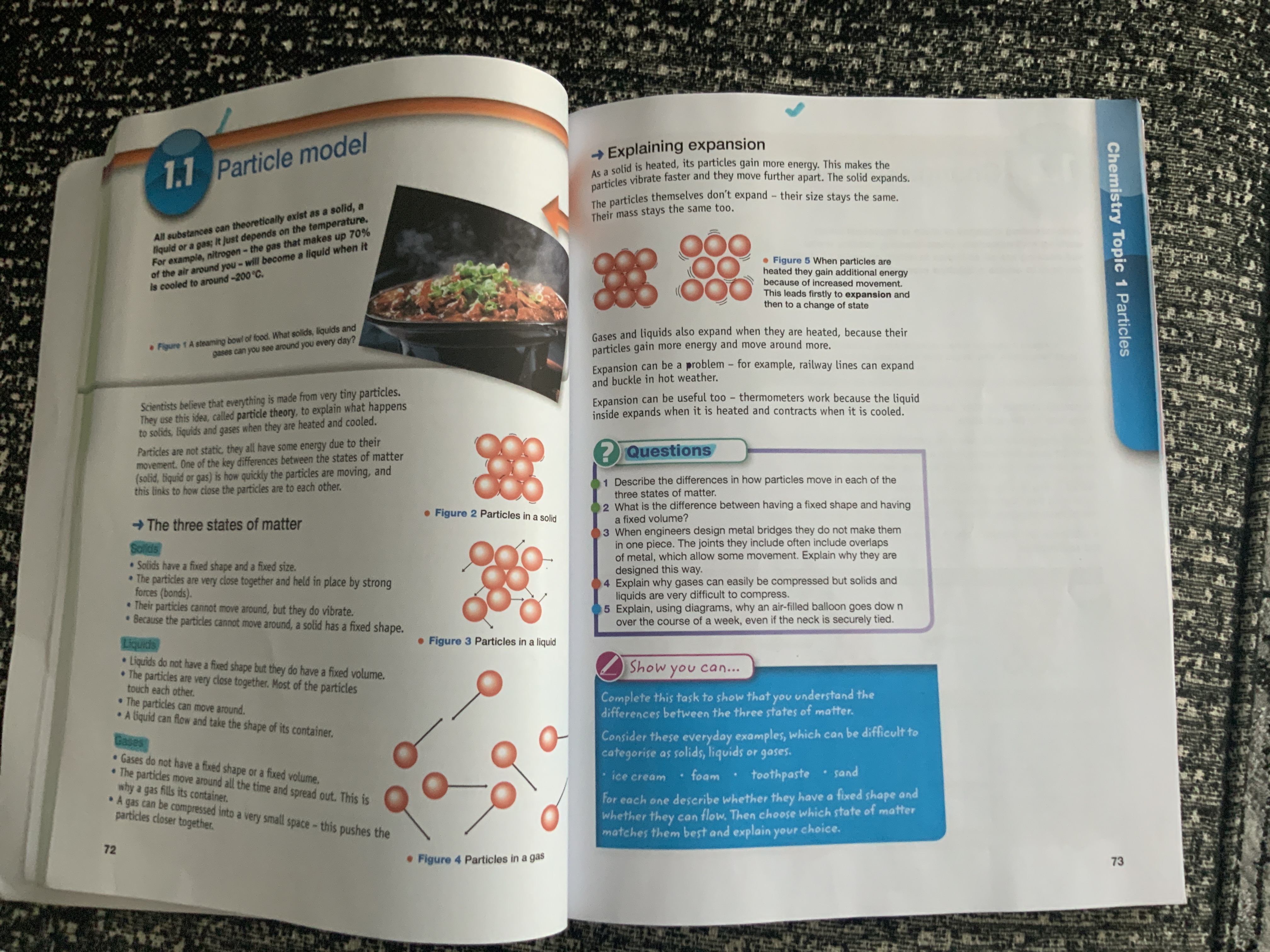Describe the differences in how particles move in each of the three states of matter.

Understand the Problem
The question is asking to explain the differences in how particles move in solids, liquids, and gases based on their physical characteristics. The focus is on the states of matter and particle behavior in each state.
Answer
Solids vibrate in place, liquids slide past each other, gases move freely.
In solids, particles vibrate but stay in fixed positions. In liquids, particles move more freely and slide past each other. In gases, particles move rapidly and freely in all directions.
Answer for screen readers
In solids, particles vibrate but stay in fixed positions. In liquids, particles move more freely and slide past each other. In gases, particles move rapidly and freely in all directions.
More Information
The movement of particles differs across states of matter due to energy levels and intermolecular forces. These differences explain why solids have a fixed shape, liquids adapt to containers, and gases expand to fill available space.
Tips
A common mistake is thinking particles in a solid do not move at all. They vibrate in place.
Sources
- Chemistry Help - Purdue - chem.purdue.edu
- States of Matter - Science Learning Hub - sciencelearn.org.nz
AI-generated content may contain errors. Please verify critical information